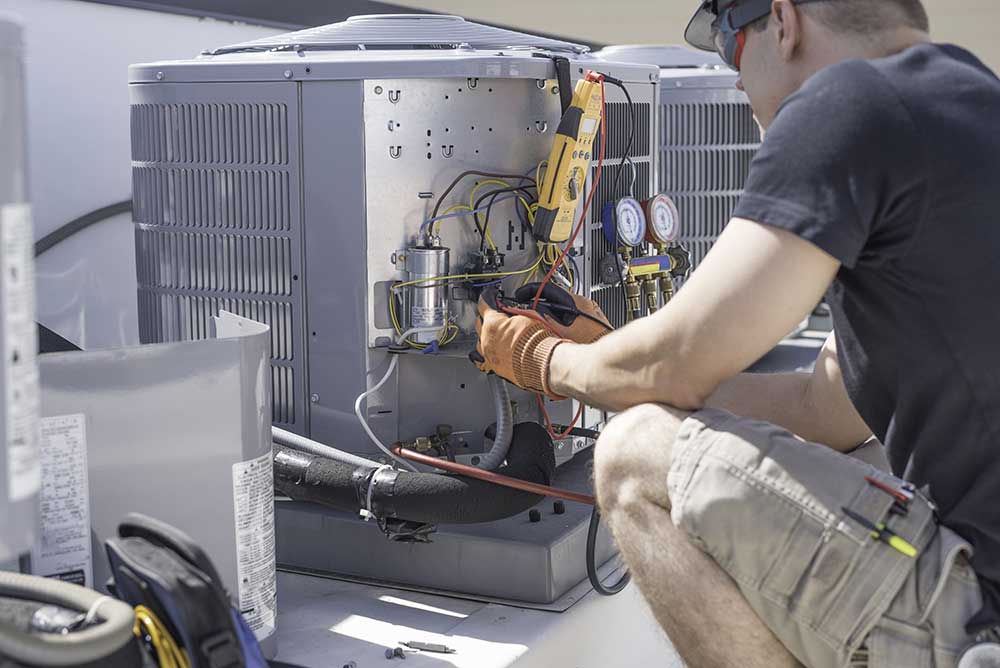A look at some tips to help in the maintenance of heating and cooling systems.

The heating, ventilation and air conditioning (HVAC) system is a good home/building appliance especially with the extreme temperatures during summer and winter. You’re also looking to elongate life and reduce frequent breakdowns which may affect its performance.
Some valuable aspects that affects the need and frequency of maintenance may include your place of residence, and the size, usage and condition of the HVAC system.
Huge buildings like hospitals, residential apartments need a more frequent and thorough maintenance schedule for their HVAC systems.
Below are some tips to help in the maintenance of the system:
The heating and cooling system also affect the internal air quality of the buildings. Filters should, therefore, be changed more frequently on a schedule of every 4-5 months. This helps to deal with accumulated dust, debris, and the healing of the filtering characteristics.
Filters that aren’t working optimally also consume a lot of energy, as the HVAC system struggles to cool or heat the air with added resistance.
These openings directly affect the quality of air inside the buildings. Inspection at this point should be done at least twice a year. Make sure any water, dust, and mold collected around the opening are removed. Dust and mold can cause respiratory problems or allergies to your guests or residents.
Hence, the entire duct should also be cleaned to remove all the dust found in it. This can be done every two years. While the process can be laborious, the exercise ensures the system performance is top quality.
The fan blade should be cleaned and assessed for any problems. Additionally, the fans and items like shafts, and wheels should also be inspected and maintained.
The lubrication of fans and bearings also needs to be taken into consideration. Instances of inadequate lubrication may result in noises, vibrations, and heat emissions from bearings. This being a technical area, can be done in liaison with experts like Professional Heating & Cooling or other trusted companies—this may include replacements and other recommendations for routine check-ups.
Belts should also be checked to ensure they aren’t too tight or loose. Alignment can be done at this stage to avoid wear and tear.
Extreme tightness causes too much load is applied to the fan systems which can cause a sudden breakdown.
Additional parts and accessories are also required to be performing in their best state, to ensure your heating and cooling system works optimally.
This is the maintenance checklist to use:
This should be done more frequently because of the growth of molds and other micro-organisms affect the air quality in buildings.
The above parts and support systems ensure the system functions properly. It can be ensured with help of qualified technicians.
When looking for a technician conducting you should show due diligence. Social media reviews on sites like Facebook and other independent online reviews can help gauge their suitability.
During summer or spring, the temperatures are generally hot, the HVAC is required as it provides a cooling effect. As winter starts the night and mornings turn chilly, thus the need to adjust your heating and cooling system to the new requirements.
Caution should be taken because a sudden adjustment can lead to break down or reduced life of the HVAC system.
Below are the sub-elements of the maintenance schedule: –
Summer and spring present an environment occasioned by dust, debris, and a lot of outdoor and indoor activities that affect air quality. The excess heat also needs to be monitored for a better home or building experience.
Below are the maintenance tips to be applied: –
Varying seasons may require you to check your heating and cooling equipment of home. Hence, maintenance of the HVAC equipment should be done frequently. Items such as thermostats, coils, air ducts, filters require regular check-up. In addition to cooling and heating effect, they also affect the air quality inside your buildings.
When transitioning into a season like winter, the equipment should be fine-tuned to help save energy and prevent possible breakdowns. In hot season, filters are required to be changed more frequently due to the increased activities.
Overall equipment maintenance is a balancing act that is needed to elongate life, enhance performance, and achieve power efficiency.

Louie Nelson
As a blogger, Louie Nelson loves to educate his readers by publishing a wide variety of topics – from home management, parenthood to business startups. Louie aims to help his readers make the most out of their lives by providing high-quality content to them.
In this episode, I sat down with Beejan Giga, Director | Partner and Caleb Emerson, Senior Results Manager at Carpedia International. We discussed the insights behind their recent Industry Today article, “Thinking Three Moves Ahead” and together we explored how manufacturers can plan more strategically, align with their suppliers, and build the operational discipline needed to support intentional, sustainable growth. It was a conversation packed with practical perspectives on navigating a fast-changing industry landscape.